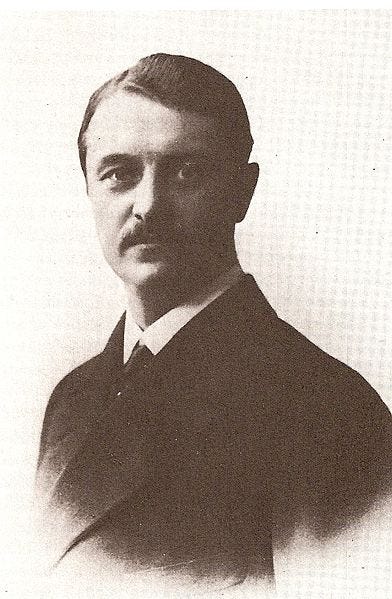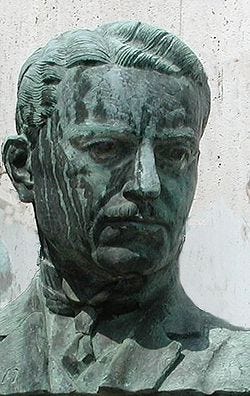How did polio erroneously become recognized as a contagious disease?
Conflicting epidemiology solved by speculation and assumptions
The inclusion of poliomyelitis in the Public Health Law as a contagious disease dates back to the early 1900s. At that time, many diseases, now known to be neither contagious nor infectious, were considered to be caused by an infectious agent simply because they occurred in epidemics.
The work of Louis Pasteur, Robert Koch, and others in the late 1800s put germ theory at the forefront of biological investigation and encouraged scientists and doctors to find links between disease conditions, especially any which occurred in epidemics, and specific causative organisms.
Enter Wickman
The physicians who reported the first polio outbreaks failed to demonstrate human routes of contagion for the vast majority of patients. This lack of evidence for disease transmission was a considerable headache for polio epidemiologists: How could its distribution patterns be explained if people weren’t passing a germ around – from patient to patient, house to house, and community to community?
The path out of the polio quagmire was laid by Dr. Ivar Wickman, a Swedish pediatrician. He studied the distribution of polio during the epidemic that hit Sweden in 1905 in an effort to trace the chain of transmission.
Like his predecessors, Wickman realized it was impossible to establish direct links for most of the sick. In addition, about 80% of them were from families with several children where only one child had gotten sick, despite the fact that no special efforts appear to have been made to isolate the patients (at least, Wickman makes no mention of such efforts).
Unlike the seemingly indecisive researchers before him who had focused on paralytic cases, Wickman took a bold step forward; he assumed that non-paralytic patients, and even perfectly healthy people, carried polio’s causative agent and could transmit it to others.
Armed with this novel supposition, Wickman set out to map the potential links between patients in a number of Swedish communities that were involved in the 1905 epidemic. In the small and remote village of Trästena, where the first cases of the epidemic were discovered, he was able to link all 49 patients, most of them children, through the village school. As might be expected, most of the affected children attended the local school, or at least occasionally associated with a child who did.
This arguably weak association was considered sufficient evidence by Wickman to infer polio transmission, even though most of the “bridge” individuals did not get sick themselves.
Wickman, obviously, did not prove, nor did he have the scientific means to prove, that any person, healthy or sick, was in fact a carrier of the alleged polio causative agent (which wasn’t identified at the time, anyway). Thus, he was unable to provide direct evidence to support the hypothetical transmission routes he describes in his writings.
Although Wickman’s description of the dissemination of polio in the Swedish epidemic of 1905 was largely based on speculation and his theory failed to provide answers to fundamental questions about the epidemic, in the “official” history of polio, Wickman is said to have “discovered” (or even “proved”) that polio is indeed a contagious disease. For this “discovery” he was posthumously inducted to the Polio Hall of Fame.
Neither Wickman nor his successors offer a persuasive explanation for polio’s unique (supposed) ability to spread mainly through healthy people rather than sick people.
Wickman also does not provide any explanation for the fact that the 1905 epidemic attacked rural and isolated communities, where houses are relatively far apart, and spared the large and vastly denser urban centers.
Wickman’s assumption that healthy people can transmit the disease allowed virtually unlimited possibilities for tracing a theoretical chain of contagion between cases. In every village there are common institutions – a school, a shop, a church – where adults and children meet, and may, ostensibly, spread the alleged polio causative agent.
But even with the help of this mitigating assumption, Wickman was unable to tie all the cases together in the communities he examined. In one of them, he failed to find a possible contagion link for 6 of the 18 children who fell ill.
In another outbreak in an island community, he was able to link all 16 patients but found no plausible explanation for how the disease had reached the island in the first place.
Wickman was not alone. He mentions at least three other European polio epidemics for which researchers, despite their best efforts, had been unable to link cases, even though they had included healthy people as potential carriers.
Ludicrous animal experiments
At the same time that Wickman was gathering evidence allegedly indicating that polio was a contagious disease, Karl Landsteiner and Erwin Popper were toiling in their laboratory in Vienna attempting to prove that it was an transmissible disease.
After failing to paralyze mice, guinea pigs, and rabbits, they finally found success with monkeys. Their method was to inject an unknown amount of emulsified spinal tissue into the stomachs of two monkeys.
Another experiment was subsequently conducted by Simon Flexner and Paul A. Lewis. They injected a similar substance into the brains of monkeys:
The institutional story of polio regards the work of Landsteiner and Popper, and the researchers who followed in their footsteps, as conclusive proof that polio is a transmissible and contagious disease.
However, these kinds of experiments do not provide ‘evidence’ of the contagious nature of any disease; the brutal and artificial methods bear absolutely no relationship whatsoever to the presumed normal transmission route of an alleged ‘infection.’ Not once did they perform proper controls to verify the accuracy of their findings.
What proof?
Admittedly, while there wasn’t solid evidence proving that polio could spread from person to person, back then, the general attitude was to assume polio was an contagious disease and that protocols to protect the public should be followed.
That attitude is summed up by I. Strauss, MD, in 1911:
So, what constituted proof that warranted this attitude? First, the belief of the time was that simply any epidemic of any disease is “sufficient to prove its infectious or contagious character.”
Secondly, Flexner at the Rockefeller Institute who injected a cadaverous mixture into the brains of monkeys seemed to remove “all doubt” about the contagious nature of polio.
Thanks Turtles All The Way Down: Vaccine Science and Myth.














When I saw the name, "Simon Flexner" the hair on the back of my neck stood up. These folks and their, "Research."
Additional information on this topic. Polio: The Virus and the Vaccine by Janine Roberts. Free download.
https://jeffreydachmd.com/wp-content/uploads/2014/12/Polio-Virus-Vaccine-Janine-Roberts_Ecologist-2004.pdf
BONUS: Free PDF Download. Updated Alternative Covid-19 Narrative Handbook. A Collection of Useful Links. https://turfseer.substack.com/p/updated-alternative-covid-19-narrative